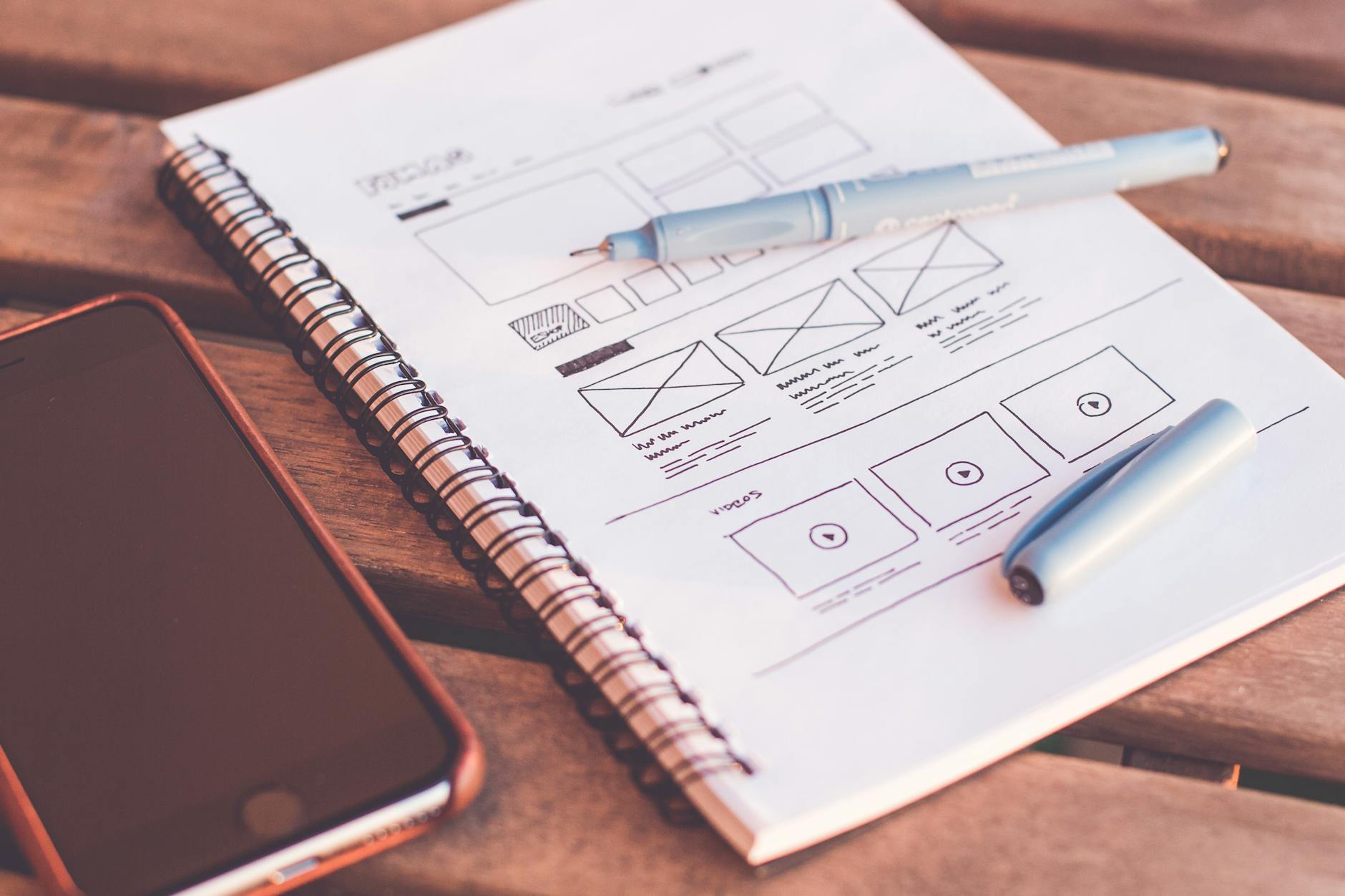The Importance and Differences Between UX and UI from a Professional Perspective
Introduction
The success of a website or application depends on excellent design. However, design encompasses two critical elements: UI (User Interface) and UX (User Experience). These elements not only influence the appearance but also profoundly affect how users feel and interact with a service.
UI and UX cover distinct yet closely related areas. Focusing on both is key to creating accessible, valuable digital experiences. In this article, we’ll explore UX and UI in detail, explaining their differences and significance from a professional perspective.
What Is UI (User Interface)?
UI (User Interface) is the “visual touchpoint” between users and a product or service. In simple terms, it refers to the parts users see and interact with, such as buttons, icons, menus, forms, layouts, and colors. UI aims to deliver an interface that is visually appealing, user-friendly, and intuitive.
Key Elements of UI Design
- Layout: Organizing information and content to create a visual hierarchy, allowing users to access essential information quickly.
- Typography: Font style, size, and spacing that enhance readability and maintain visual consistency and usability.
- Colors: Colors evoke emotions. For example, warm colors convey friendliness, while cool tones evoke trust and professionalism. Contrast also impacts visual accessibility.
- Buttons and Icons: Clickable elements must be visually distinct and logically placed for optimal usability.
- Responsive Design: Designing for various devices, such as mobile phones, tablets, and desktops, ensures usability across different screen sizes.
The Purpose of UI
The primary goal of UI is to provide a visually appealing and intuitive interface. Easy-to-navigate, well-designed UI enhances user satisfaction and trust in a service.
For instance, in an e-commerce site, appropriately positioned product listings, detailed information, and purchase buttons ensure smooth transactions. Consistency in design—such as a cohesive color palette and fonts—prevents visual confusion and leaves a professional impression.
What Is UX (User Experience)?
UX (User Experience) refers to the overall experience users have while interacting with a product or service. UX directly impacts user satisfaction and emotions, evaluating not only the appearance or usability but also the value and functionality of the entire system.
Key Elements of UX Design
- Usability: How easy it is to use a service or product. An ideal design minimizes errors and reduces the learning curve.
- Accessibility: Ensuring that diverse user needs are met, including support for users with disabilities or those on various devices. For example, integrating screen reader compatibility for visually impaired users.
- Information Architecture: Structuring a site or app so users can quickly and easily access the information they need.
- Interaction Design: Designing how users interact with the system, including button responses and form feedback.
- Satisfaction: The ultimate user experience should leave users feeling satisfied through ease of use, efficiency, and intuitive design.
The Purpose of UX
The primary goal of UX is to offer a comfortable and valuable experience. Beyond ease of use and accessibility, it considers how users feel while interacting with the product.
For example, an app with excellent UX allows users to find the information or perform the actions they need without confusion, ultimately reducing stress and increasing satisfaction. Positive experiences lead to higher user retention and recommendations.
The Differences Between UI and UX
UI and UX are often confused, but they play distinct roles:
- UI (User Interface) focuses on the “look and feel” and interaction design. UI designers create interfaces that are visually appealing and easy to use.
- UX (User Experience) encompasses the overall “user journey.” UX designers focus on enhancing satisfaction and efficiency by improving the product’s functionality and usability.
The Synergy Between UI and UX
Good UI without strong UX can leave users frustrated by a visually attractive but impractical design. Conversely, good UX with poor UI might result in a functional but visually uninspiring experience. Balancing UI and UX ensures they complement each other effectively.
For example, in an e-commerce site, visually attractive product pages (UI) must also make it easy to locate items and complete transactions smoothly (UX). Without this balance, users may abandon the site.
The Impact of UX and UI on Business
Good UX and UI design not only improve user satisfaction but also drive business growth. Here are a few examples:
1. Building Trust and Enhancing Brand Value
Providing visually appealing UI and a comfortable UX instills trust in users. This boosts brand image and fosters customer loyalty.
2. Increasing Conversion Rates
Actions like purchases or sign-ups on websites and apps depend heavily on UX and UI. Systems that are intuitive and easy to use significantly increase the likelihood of users completing desired actions.
3. Reducing Customer Support Needs
With well-designed UX/UI, users intuitively understand the product or service, reducing the need for support inquiries. This lowers operational costs while enhancing user satisfaction.
4. Boosting Customer Retention and Repeat Rates
Providing usability and comfort increases the chances that users will return to the product or service. More repeat users contribute to long-term business growth.
Conclusion
UX and UI are indispensable elements for the success of digital products and services. UI pursues visual appeal and usability, while UX enhances satisfaction through the overall experience. Neither is sufficient on its own; their effective integration creates valuable user experiences.
In modern web and application development, balancing UX and UI while addressing user needs and business goals is essential. By adopting a professional, user-centered design approach, you can create competitive products and services.
Thank you for reading this article.
At greeden, we are committed to helping you bring your ideas to life. From system development to software design, we offer flexible and reliable solutions tailored to solve your challenges and support your business growth.
If you have questions about system development or ideas you’d like to realize, don’t hesitate to reach out. Let’s work together to achieve your vision.
For inquiries, please visit our contact page.
